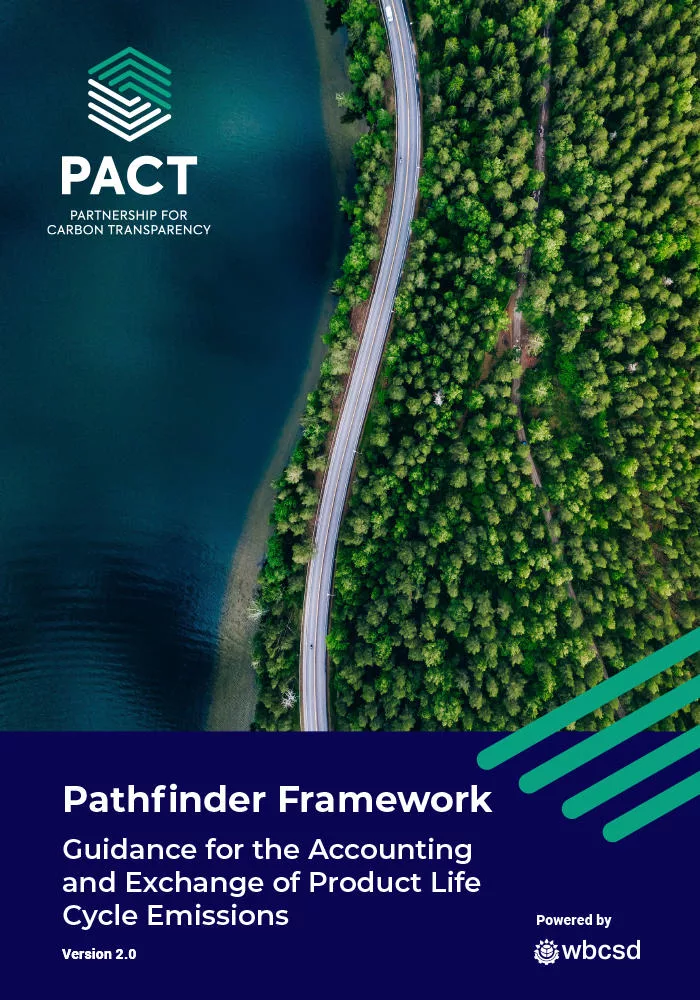Pathfinder Framework Version 2.0
Published: January 26, 2023

Achieving net-zero requires the transformation towards low-carbon products and services in all value chains. However, today’s complex value chains provide little visibility or control over products’ emissions, resulting in inaccurate emissions accounting which hinders effective decarbonization measures.
The Partnership for Carbon Transparency (PACT)’s Pathfinder Framework is resolving this challenge by taking a cross-sectoral approach to help organizations develop and exchange primary data-based product carbon footprints (PCFs). The requirements captured in it seek to further enhance data reliability and consistency across industries and value chains.
Originally launched at COP26 in Glasgow, the Pathfinder Framework version 2.0 can be now downloaded. You will find six chapters focusing on:
- An introduction to the challenge, the solution and the opportunity. Current efforts to reduce greenhouse gas (GHG) emissions are insufficient to meet the Paris Agreement targets. Accounting for and exchanging reliable and consistent GHG emissions data is key to supercharging decarbonization efforts.
- An overview of the general setup of the Framework with the aim of easing navigation and providing essential context.
- Emissions accounting. In order to foster a better understanding of emissions, companies shall calculate their cradle-to-gate PCF and exchange this along the value chain.
- Creating integrity. One of the core aims of PACT is to increase the share of quality primary data used to calculate PCFs.
- Assurance and verification. The resolution of the Scope 3 challenges businesses face today requires that high-quality (relevant, complete, consistent, transparent, and accurate) data can be shared across value chains. Assurance and verification ensure the reliability of this data, creating the necessary trust among all stakeholders to drive decarbonization at scale.
- Data exchange. Standardized PCF accounting and data exchange constitute a key step toward creating greater comparability and consistency within the supply chain.